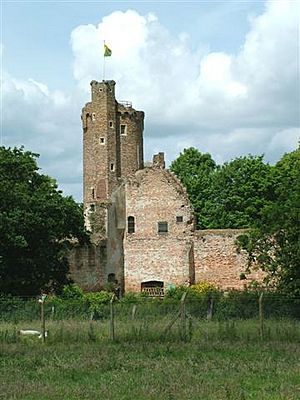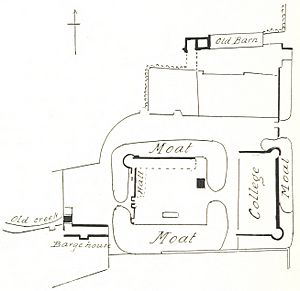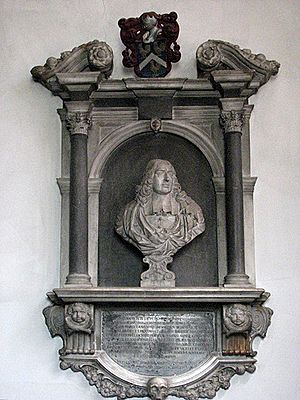Caister Castle facts for kids
Caister Castle is a cool 15th-century castle with a moat (a ditch filled with water) around it. It's located in West Caister, about 5 kilometers (3 miles) north of Great Yarmouth in Norfolk, England.
This amazing castle was built between 1432 and 1446 by a knight named Sir John Fastolf. He was so famous that he even inspired William Shakespeare's character, Falstaff! The castle had a super tall tower, about 33 meters (100 feet) high.
Sadly, the castle was badly damaged in 1469. It was attacked and taken over by the Duke of Norfolk. After 1600, most of the castle became ruins, except for its tall tower. Today, you can still climb the tower and explore the castle grounds!
Contents
Exploring Caister Castle's Past
How the Castle Was Built
Sir John Fastolf, a wealthy knight, started building Caister Castle in 1432. It took him 14 years to complete this impressive fortress. He wanted it to be a strong and grand home.
What Happened After Sir John Fastolf Died?
When Sir John Fastolf passed away in 1459, he didn't have any children. He had planned for his castle to become a special place for prayers. However, there were many arguments about his will.
Because of these arguments, the castle ended up going to the Paston family. The Pastons were a well-known family who wrote many letters about their lives. These letters, called the 'Paston Letters', tell us a lot about what happened at Caister Castle during the Wars of the Roses.
The Siege of Caister Castle
The Paston family had to fight to keep the castle. In August 1469, the Duke of Norfolk attacked Caister Castle. He believed the castle belonged to him.
John Paston Junior and about 30 men defended the castle for two months! It was a tough fight. Sadly, one of the Paston's loyal servants was killed by a crossbow. In the end, the Duke of Norfolk took control of the castle.
However, a few years later, the Paston family got Caister Castle back. In 1659, they sold it to William Crow, a businessman from London. You can still see a memorial for William Crow in Holy Trinity Church in Caister-on-Sea.
Later Years of the Castle
Over time, the castle was not well cared for. Parts of it were even taken apart to build other things. For example, around 1776, a staircase with 122 stone steps was removed from the tower and used in another house!
The inner moat around the castle was filled in between 1842 and 1893. A new lake was created by making the south-eastern side wider. In 1952, Charles Hamblen-Thomas owned the castle.
Caister Castle Motor Museum
Exploring Classic Cars and More
The Caister Castle Motor Museum opened in the 1960s. It's located on the castle grounds. This museum has a private collection of really cool old cars and motorcycles. You can see cars from different time periods, including veteran, vintage, classic, and sports cars.
The museum also displays bicycles, horse-drawn vehicles, pedal cars (like toy cars you pedal), and old farm equipment. All these exhibits are in a special building built just for the museum. When you visit Caister Castle, your ticket usually includes entry to the museum, the castle tower, and the beautiful grounds.
See also
- Paston, Norfolk
- Oxnead




